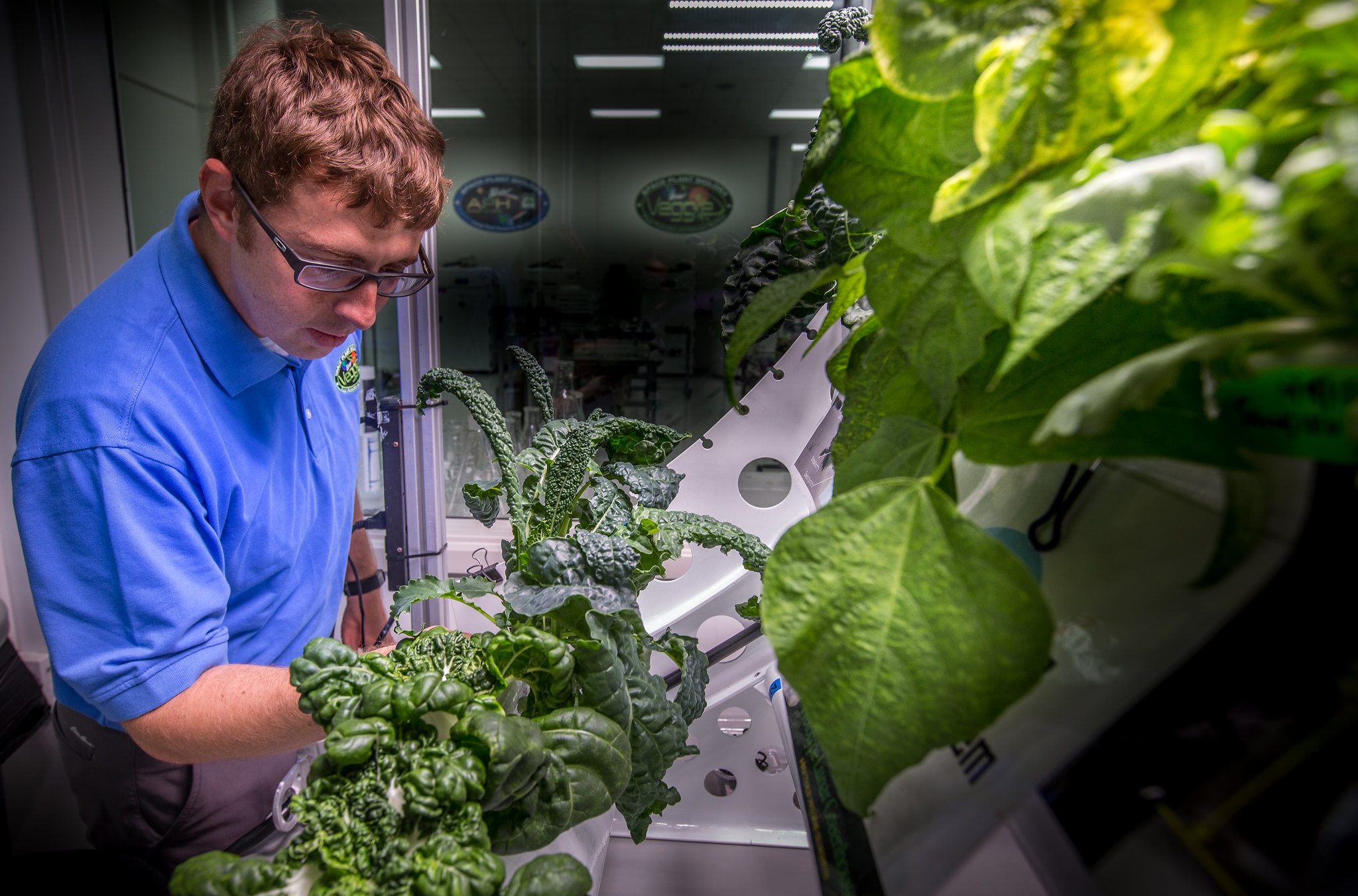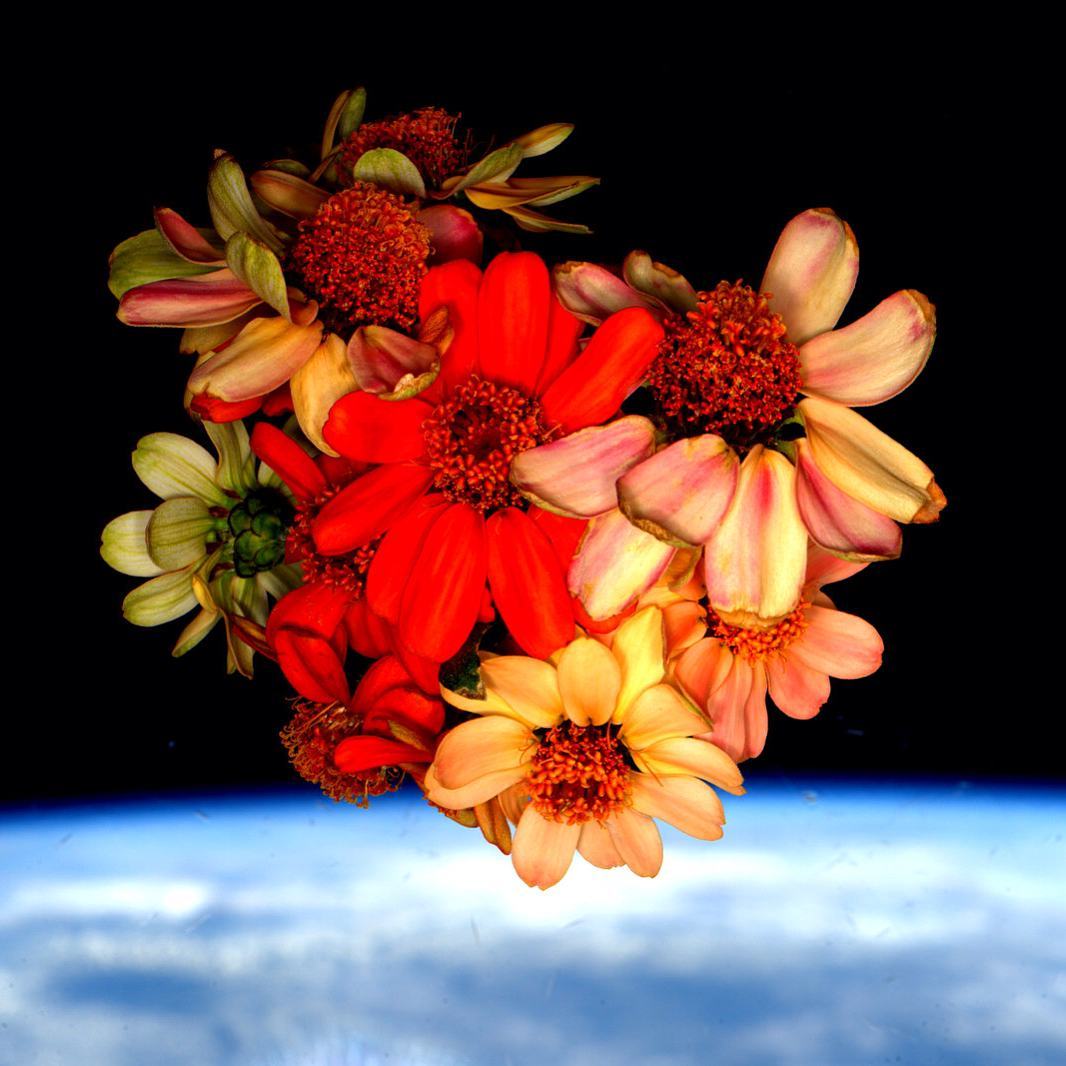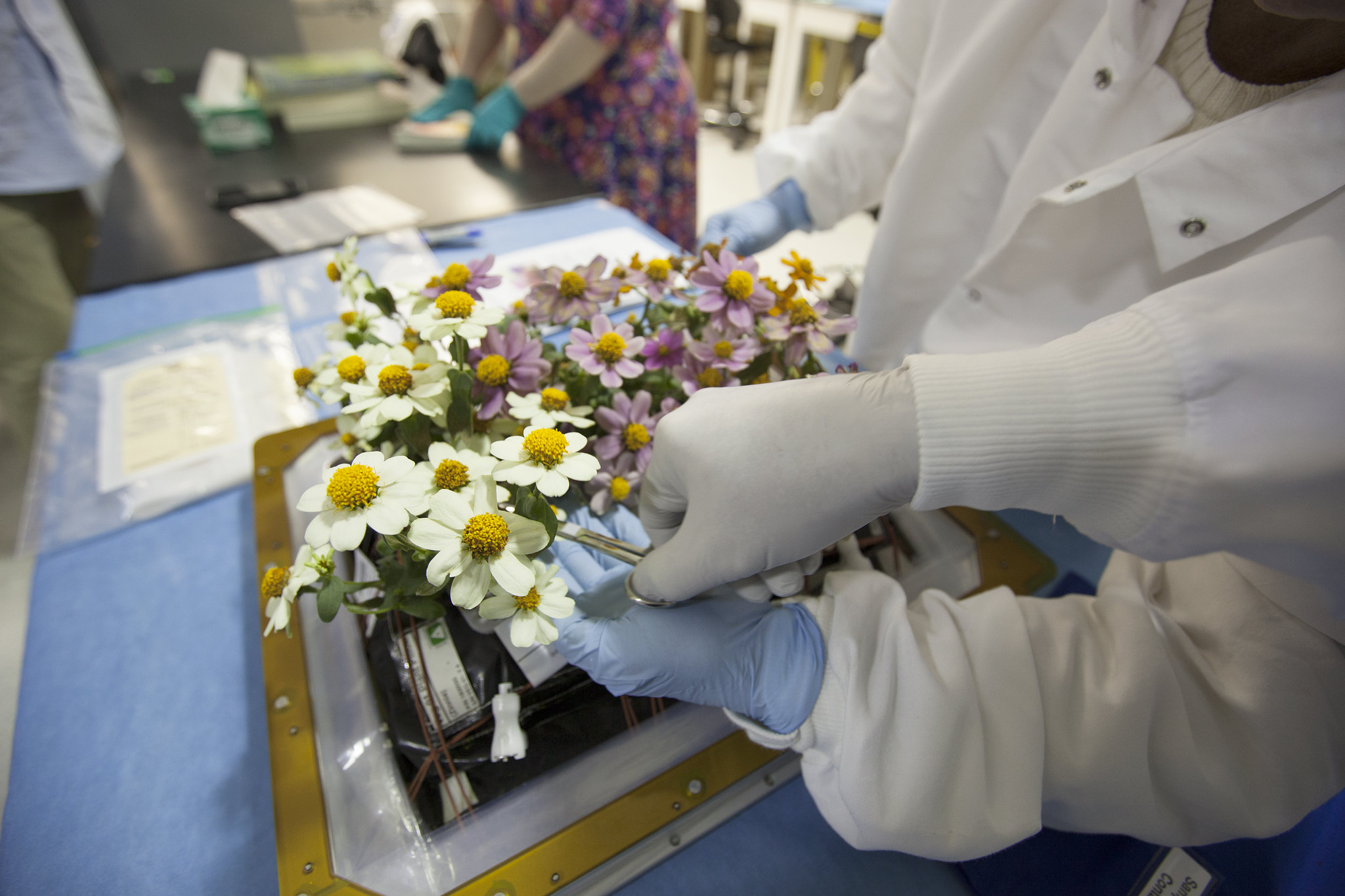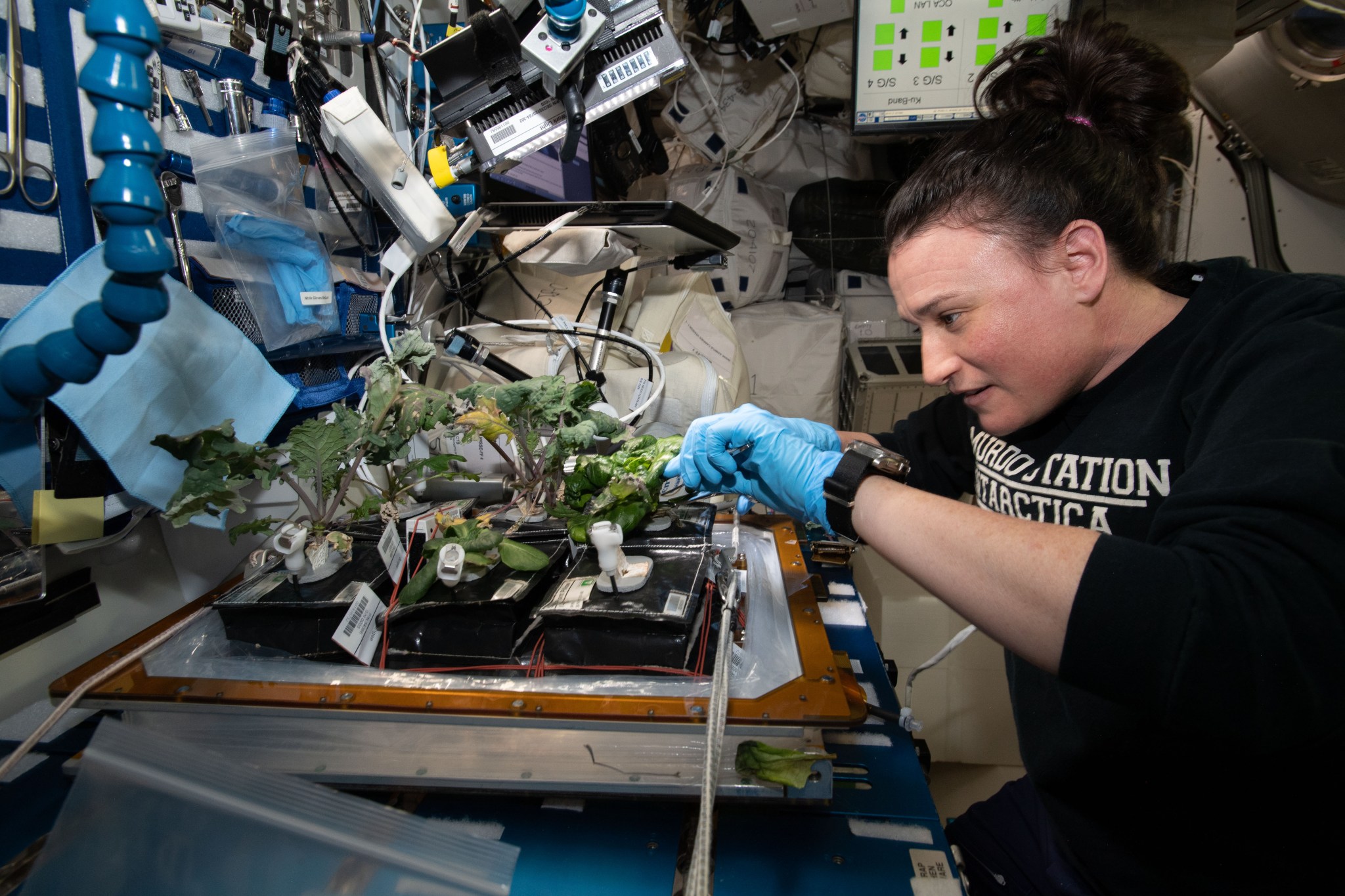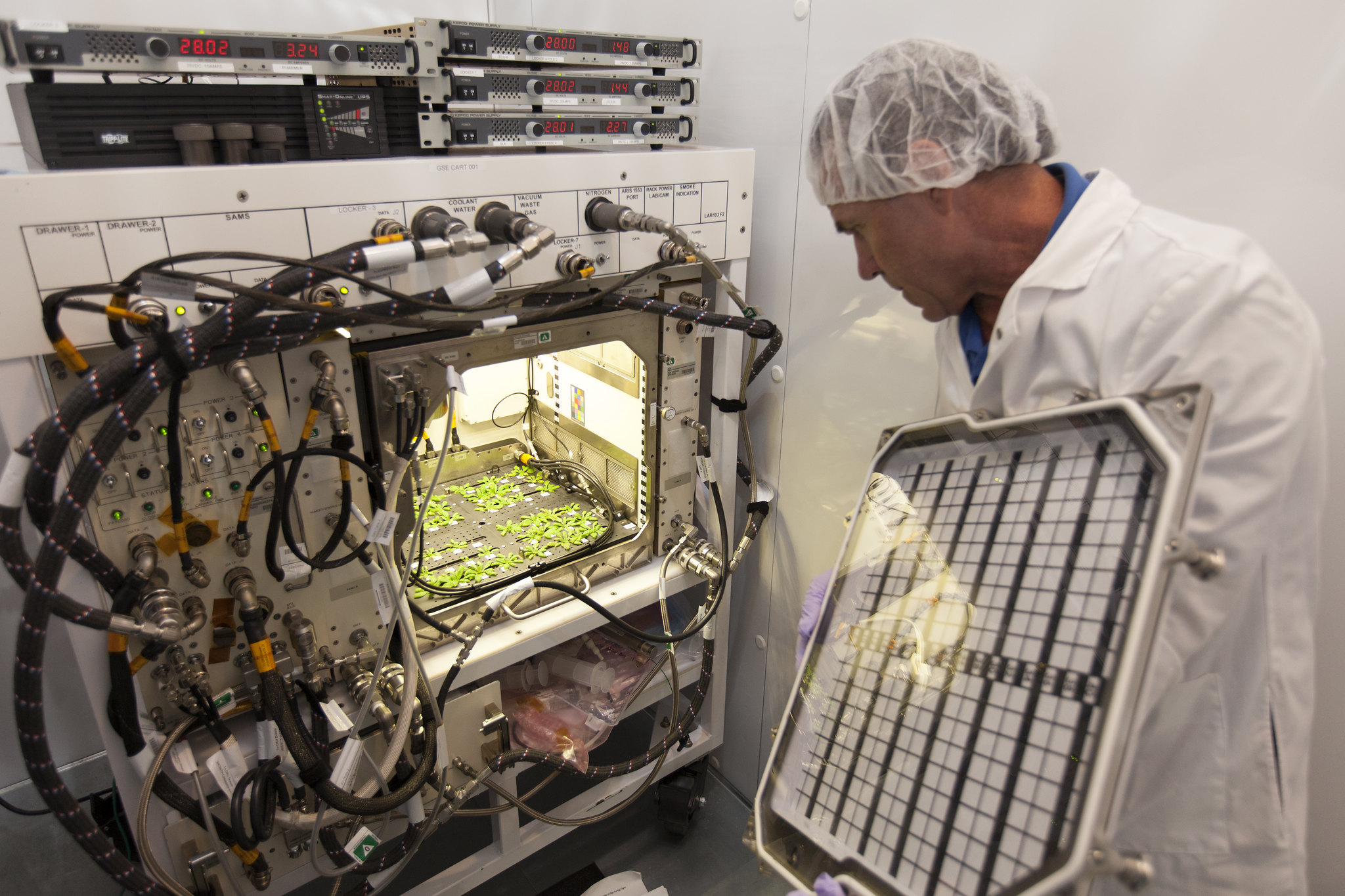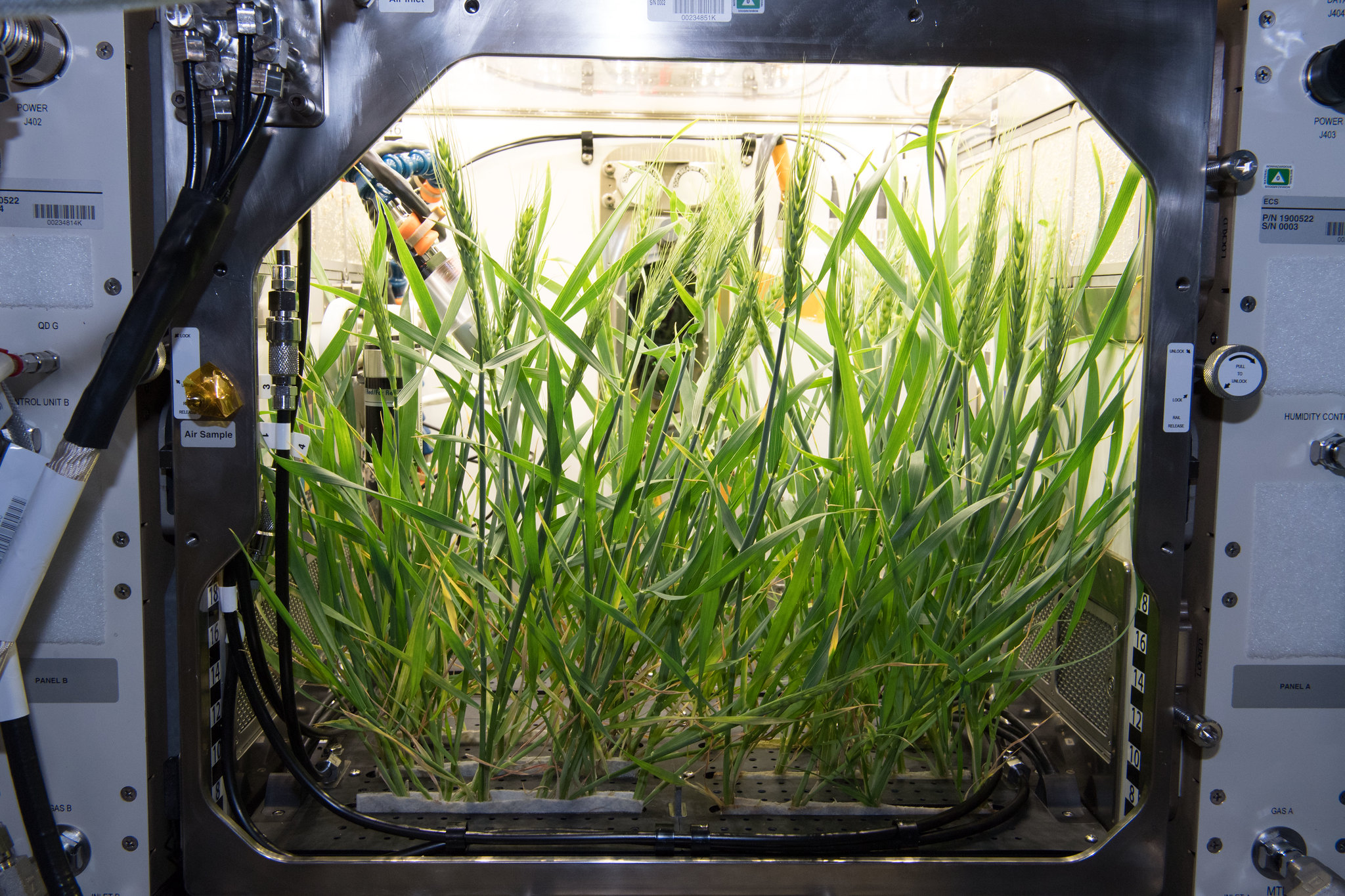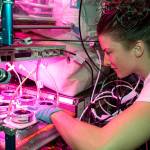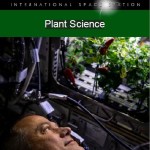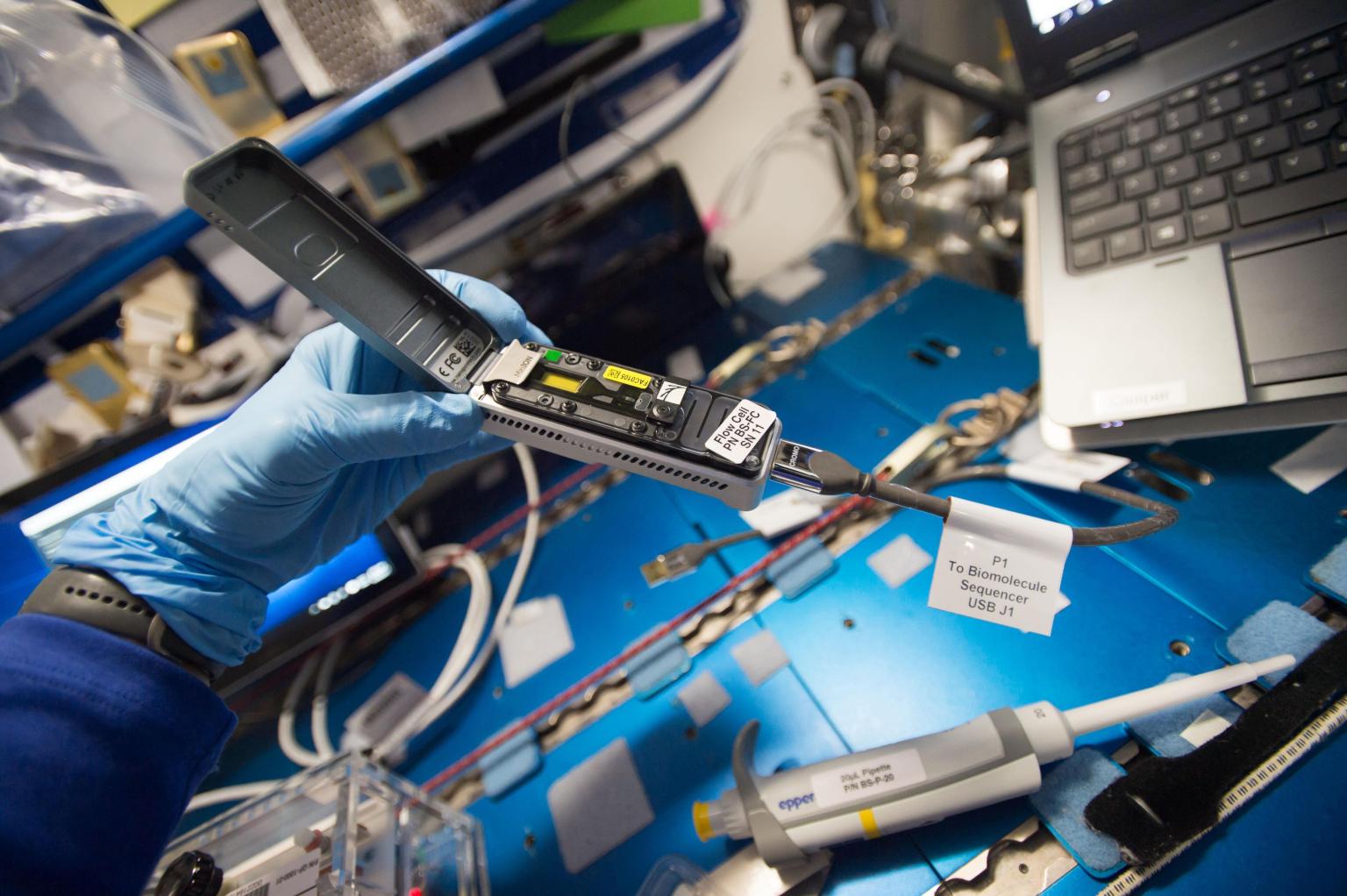Growing Plants in Space
As humans explore space, we will want to bring plants for both aesthetic and practical reasons. We already know from our pioneering astronauts that fresh flowers and gardens on the International Space Station create a beautiful atmosphere and let us take a little piece of Earth with us on our journeys. They’re good for our psychological well-being on Earth and in space. They also will be critical for keeping astronauts healthy on long-duration missions.
A lack of vitamin C was all it took to give sailors scurvy, and vitamin deficiencies can cause a number of other health problems. Simply packing some multi-vitamins will not be enough to keep astronauts healthy as they explore deep space. They will need fresh produce.
Right now on the space station, astronauts receive regular shipments of a wide variety of freeze-dried and prepackaged meals to cover their dietary needs – resupply missions keep them freshly stocked. When crews venture further into space, traveling for months or years without resupply shipments, the vitamins in prepackaged form break down over time, which presents a problem for astronaut health.
NASA is looking at ways to provide astronauts with nutrients in a long-lasting, easily absorbed form—freshly grown fresh fruits and vegetables. The challenge is how to do that in a closed environment without sunlight or Earth’s gravity.
Veggie
The Vegetable Production System, known as Veggie, is a space garden residing on the space station. Veggie’s purpose is to help NASA study plant growth in microgravity, while adding fresh food to the astronauts’ diet and enhancing happiness and well-being on the orbiting laboratory. The Veggie garden is about the size of a carry-on piece of luggage and typically holds six plants. Each plant grows in a “pillow” filled with a clay-based growth media and fertilizer. The pillows are important to help distribute water, nutrients and air in a healthy balance around the roots. Otherwise, the roots would either drown in water or be engulfed by air because of the way fluids in space tend to form bubbles.
In the absence of gravity, plants use other environmental factors, such as light, to orient and guide growth. A bank of light emitting diodes (LEDs) above the plants produces a spectrum of light suited for the plants’ growth. Since plants reflect a lot of green light and use more red and blue wavelengths, the Veggie chamber typically glows magenta pink.
To date, Veggie has successfully grown a variety of plants, including three types of lettuce, Chinese cabbage, mizuna mustard, red Russian kale and zinnia flowers. The flowers were especially popular with astronaut Scott Kelly, who picked a bouquet and photographed it floating in the cupola against the backdrop of Earth. Some of the plants were harvested and eaten by the crew members, with remaining samples returned to Earth to be analyzed. One concern was harmful microbes growing on the produce. So far, no harmful contamination has been detected, and the food has been safe (and enjoyable) for the crew to eat.
Our team at Kennedy Space Center envisions planting more produce in the future, such as tomatoes and peppers. Foods like berries, certain beans and other antioxidant-rich foods would have the added benefit of providing some space radiation protection for crew members who eat them.
Veggie
As humans expand space exploration farther from Earth, the ability to grow a supplemental food crop is a solution to the challenge of long-duration missions into deep space. Access our Veggie fact sheet below to learn more.
Learn More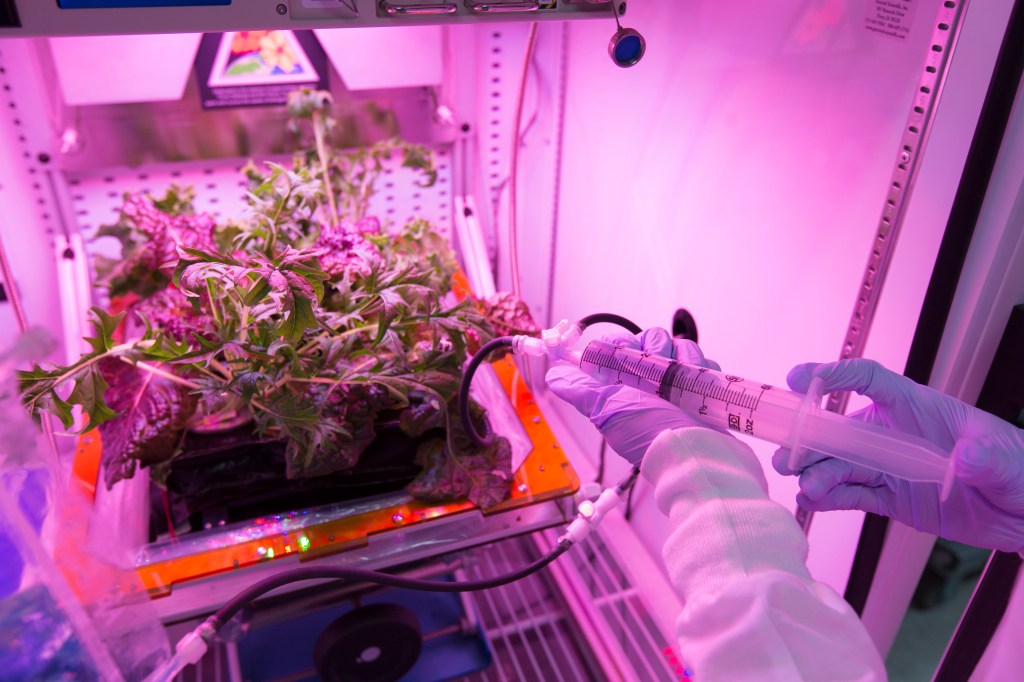
Advanced Plant Habitat
The Advanced Plant Habitat (APH), like Veggie, is a growth chamber on station for plant research. It uses LED lights and a porous clay substrate with controlled release fertilizer to deliver water, nutrients and oxygen to the plant roots.
But unlike Veggie, it is enclosed and automated with cameras and more than 180 sensors that are in constant interactive contact with a team on the ground at Kennedy, so it doesn’t need much day-to-day care from the crew. Its water recovery and distribution, atmosphere content, moisture levels and temperature are all automated. It has more colors of LED lights than Veggie, with red, green, and blue lights, but also white, far red and even infrared to allow for nighttime imaging.
When a harvest is ready for research studies, the crew collects samples from the plants, freezes or chemically fixes them to preserve them, and sends them back down to Earth to be studied so scientists can better understand how space affected their growth and development.
APH had its first test run on the space station in Spring 2018 using Arabidopsis thaliana (the “white mouse of the plant research world”) and dwarf wheat. The time-lapse video of this was a popular social media release from the space station worldwide.
Dr. Norman Lewis is the principal investigator for the Arabidopsis Gravitational Response Omics (Arabidopsis-GRO) consortium study, which will be the first study using APH. He and his collaborators are especially interested in what happens to plants in space at the gene, protein and metabolite level, and what changes occur and why.
A key question they want to answer is the relationship between microgravity and plant lignin content. Lignins in plants have functions whose closest analogy is that of bones in humans. They give structure and rigidity to plants and the means to stand upright against gravity. We already know space causes bone and muscle loss in humans because the physical demands are lower in space. So what about lignins?
Lewis and his team also want to know if plants genetically engineered to have less lignin can survive and function normally in space. This could give space-grown plants several advantages, including being better for nutrient absorption when humans eat them and in making plant waste easier for composting. Lewis and his team believe this fundamental science information will guide our strategies for deep space exploration and colonization.
Lewis knows space science has come a long way already — and that the possibilities on the horizon were previously the world of fiction!
Plant Habitat-04
NASA's Plant Habitat-04 (PH-04) experiment cultivated chile peppers aboard the International Space Station for the first time.
Learn More about Plant Habitat-04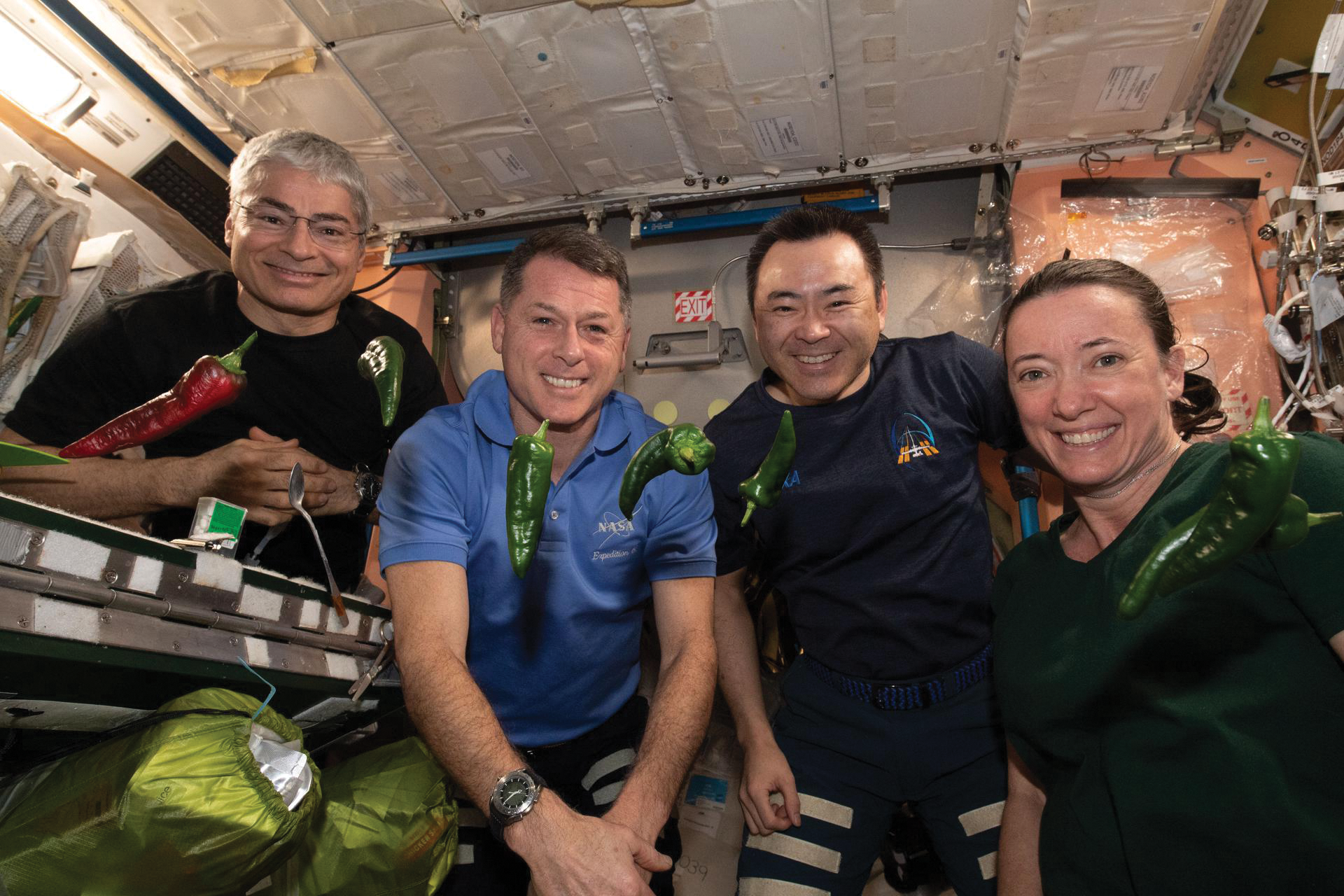
Biological Research in Canisters
The Biological Research in Canisters (BRIC) is a facility used to study the effects of space on organisms small enough to grow in petri dishes, such as yeast and microbes. BRIC-LED is the latest version, which added light-emitting diodes (LEDs) to support biology such as plants, mosses, algae and cyanobacteria that need light to make their food.
Right now, BRIC-LED is undergoing hardware validation tests. Scientists want to ensure the LEDs don’t get too hot for the plants and do other system checks. Soon, researchers such as Dr. Simon Gilroy of the University of Wisconsin-Madison will use it to conduct studies.
Gilroy is interested in how the Arabidopsis plant’s gene expression changes in space. “There are literally thousands of experiments done on Earth [on Arabidopsis],” Gilroy explains. “Cold shock. Touched them. Not watered them. Too much water. Shouted at them,” he says with a chuckle. “Those databases are all available to us. So we look and see if there are any patterns anyone has found and what on the ground mimics what happens in space.”
Some patterns that arise are expected, like when the genes associated with gravity become altered. But two patterns that have caught Gilroy’s attention have to do with the plants’ immune system.
The plants seem to have increased stress from oxidation. Normal chemistry in the cells makes a very reactive oxygen-based chemical. Uncontrolled, this “reactive oxygen species” can react with the machinery that repairs DNA and mess that up, or it can damage mitochondria. In a healthy plant, the cells have ways of dealing with it. But in space, plants are making more of it.
The other pattern is certain genes associated with the immune system turn on and others switch off in space. Scientists suspect this may compromise that plants’ ability to fight off infections.
There is anecdotal evidence, too, that plants in space may be struggling to fend off pathogens. Once, the zinnias in Veggie got a little overwatered, and there was a lack of air flow. A fungus started growing on the plants, and some died. Astronaut Scott Kelly delicately cleaned off the fungus, nursed the surviving plants back to health and got them to flower. It could have been a fluke, but it raised the question if space was weakening the zinnia’s health.
Rather than intentionally making Veggie plants sick to test this theory, scientists want to run gene expression studies using BRIC-LED and trick plants into thinking they’re being threatened. They do this by manipulating protein receptors on the plants, which are constantly on the lookout for signs of bacteria.
Bacteria use a whip-like structure called a flagellum to help them swim, and flagella all share a common set of 22 amino acids nicknamed “flag-22.” Plants are looking for flag-22, and their defense systems kick on as soon as they pick up on it. Scientists can squirt a harmless solution of flag-22 onto the plants. “The plant freaks out and thinks it’s being attacked,” Gilroy explains.
In the BRIC-LED experiment, tiny plants are grown for 10 days, and then scientists squirt them with flag-22. An hour later, the plants are fully defending themselves, and scientists douse them with a chemical fixative to stop all biological processes. This fixative does a great job of preserving the plants’ response state, but as an added step, the plants are put into a deep freeze. The plants are later sent back down to Earth and ground up to have their RNA extracted and analyzed.
Gilroy hopes to learn more about the effects of space on a plant’s health this way. “The patterns will tell us whether the plant defense system is operating correctly or not,” he says.
Research like this will help NASA understand how to keep plants flourishing in space and better enable long-duration missions.
























